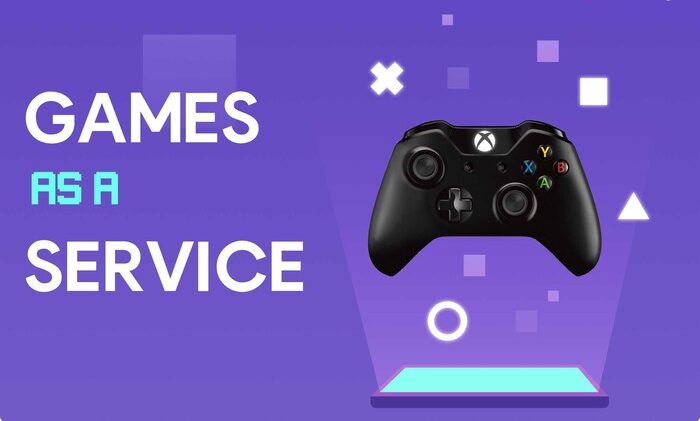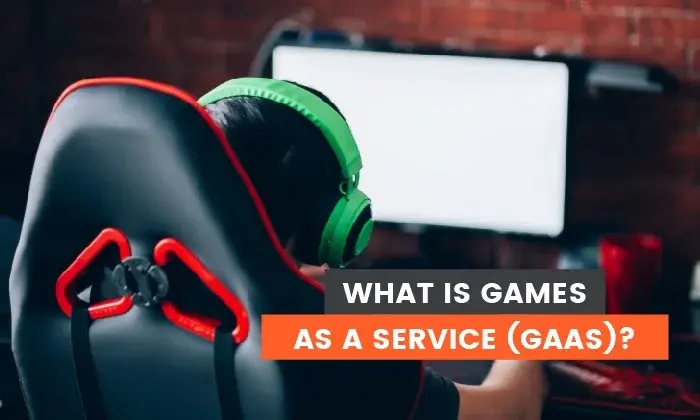Games as a Service (GaaS) transforms video games into ongoing services rather than one-time purchases.
Developers roll out regular updates, add fresh content, and maintain long-term support to keep players engaged.
Instead of relying on a single payment, companies generate revenue through subscriptions, in-game purchases, or monetization strategies.
Hey, players! Have you noticed how some of your favorite games keep getting new features and content?
That’s Gaming as a Service at work! It’s reshaping how we engage with and pay for games, turning them into ever-evolving experiences instead of standalone products.
Let’s explore why this model is gaining traction!

What Is GaaS in Gaming?
GaaS, also known as Gaming as a Service, is a system where a game operates as a continuous experience rather than a one-time buy.
Unlike traditional subscriptions that grant access to multiple titles, GaaS centers on a specific game or platform, providing consistent updates, new features, and continuous support to maintain player engagement.
Where the Term Comes From
The “as a Service” model initially emerged in the software industry, with well-known examples like SaaS (Software as a Service) used in platforms like Microsoft 365 and Google Workspace.
Over time, the gaming industry embraced this approach, seeing its value in providing continuous content updates and keeping players engaged.
The Games-as-a-Service concept became widely adopted during the early 2010s as developers integrated it into their titles.
Online multiplayer games, mobile platforms, and digital stores embraced this strategy, enabling ongoing updates and prolonged player engagement.

How GaaS Works
Here’s how the GaaS model usually functions:
- Consistent Updates: Developers roll out fixes, updates, and additional content to keep the game exciting.
- Ongoing Enhancement: Developers focus on improving and growing the current game instead of creating new versions.
- Microtransactions: Players can purchase in-game items such as skins, battle passes, or additional content.
- Player Interaction: Developers listen to feedback and make changes based on it.
- Limited-Time Events: Unique in-game activities inspire players to return and engage again.
- Playing Across Different Platforms: Many GaaS games allow players to play on different devices.
- Data-Driven Decisions: Developers utilize player information to shape the direction of future improvements.
Popular GaaS Games
Many well-known games use the GaaS model. Here are some examples:
- Fortnite: A no-cost battle royale game with periodic updates and a battle pass feature.
- World of Warcraft: An online role-playing game that follows a subscription model and offers frequent expansions.
- Destiny 2: A perspective-based shooting game that features regular updates throughout the year and additional content packages.
- Rainbow Six Siege: A strategy-based shooter with continuous updates since its release in 2015.
- Grand Theft Auto Online: Rockstar frequently updates the multiplayer segment of GTA V with new content.
- FIFA Ultimate Team: An evolving mode within FIFA, receiving constant updates and new features.
- Apex Legends: A no-cost battle royale game featuring seasonal updates and new playable characters.
How GaaS Games Make Money?

Games using this model earn revenue in different ways:
- No-Cost Entry with Purchases – The game is free, but users can spend money on optional in-game content.
- Recurring Payment Model – Players subscribe with a regular fee to access the game and its features.
- Progression-Based Passes – A paid system where users earn rewards as they advance through gameplay.
- Content Expansions – Larger updates are released separately, often requiring an additional purchase.
- Single Purchase with Free Updates – A one-time payment grants access to the game, with updates included at no extra cost.
- Combination Payment Models – Some games incorporate multiple monetization strategies for variety.
Other GaaS Terms
When looking into GaaS, you might come across these words:
- Live Service Games: An alternative term for GaaS that emphasizes ongoing improvements.
- Microtransactions: Minor transactions within the game.
- DLC (Downloadable Content): Extra content added to a game.
- Loot Boxes: Purchasable items that provide randomized rewards.
- Early Access: A game released before it’s finished, often updated over time.
- Patching: Keeping a game updated is crucial for GaaS titles.
- Blueprint: A schedule outlining upcoming improvements.
- Seasonal Content: Players can unlock exclusive bonuses or complete time-sensitive challenges within a set period.
- Player Loyalty: Measures the duration of a gamer’s engagement with a game.
- Live Ops: Overseeing and maintaining an active game.
Now you understand how Gaming as a Service operates and its impact on gaming.
Whether earning rewards through a season pass or receiving free content updates, you use the GaaS model.
While these games provide continuous new experiences, it’s essential to be aware of in-game spending.
Play responsibly and have a great time!

